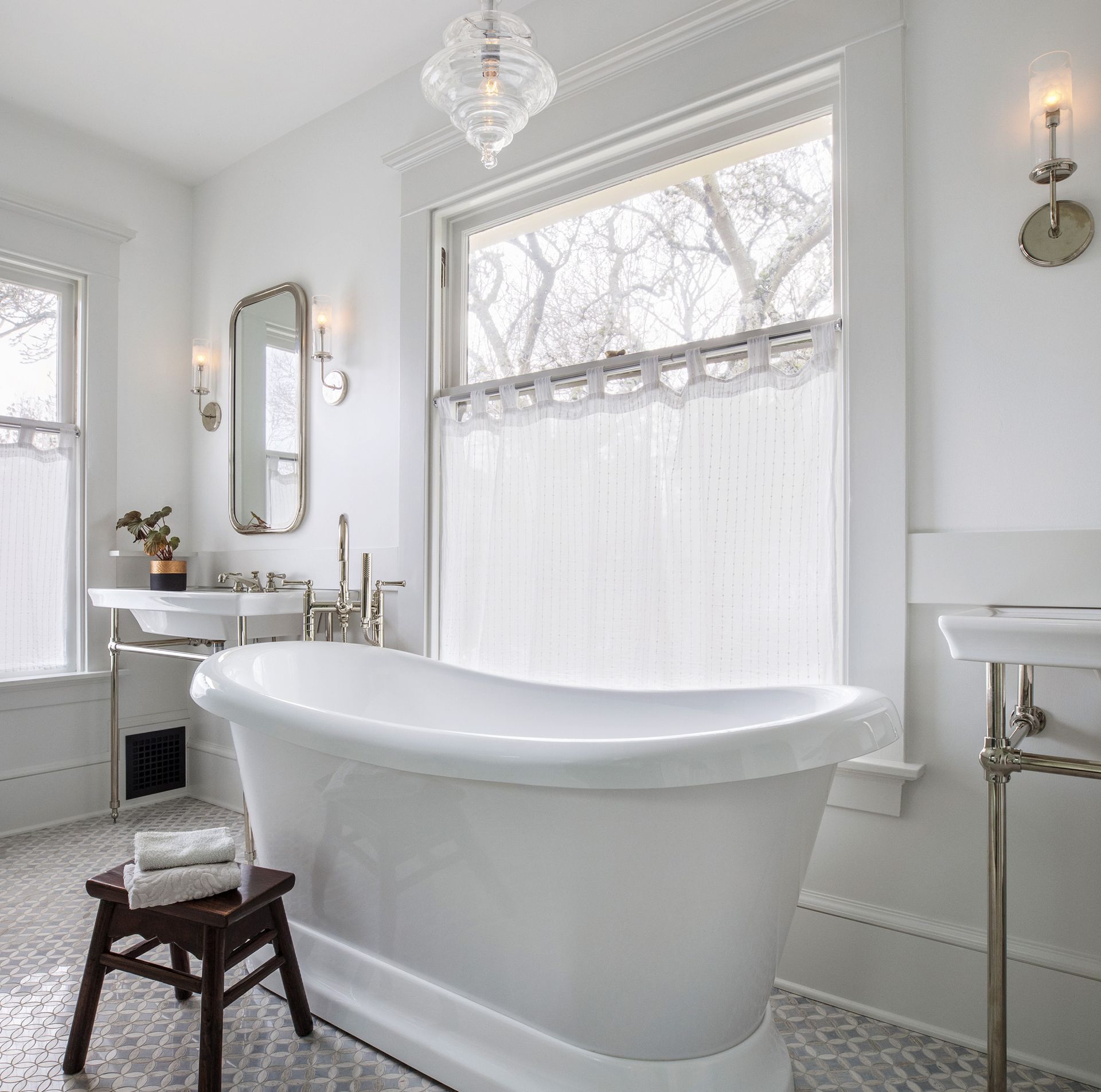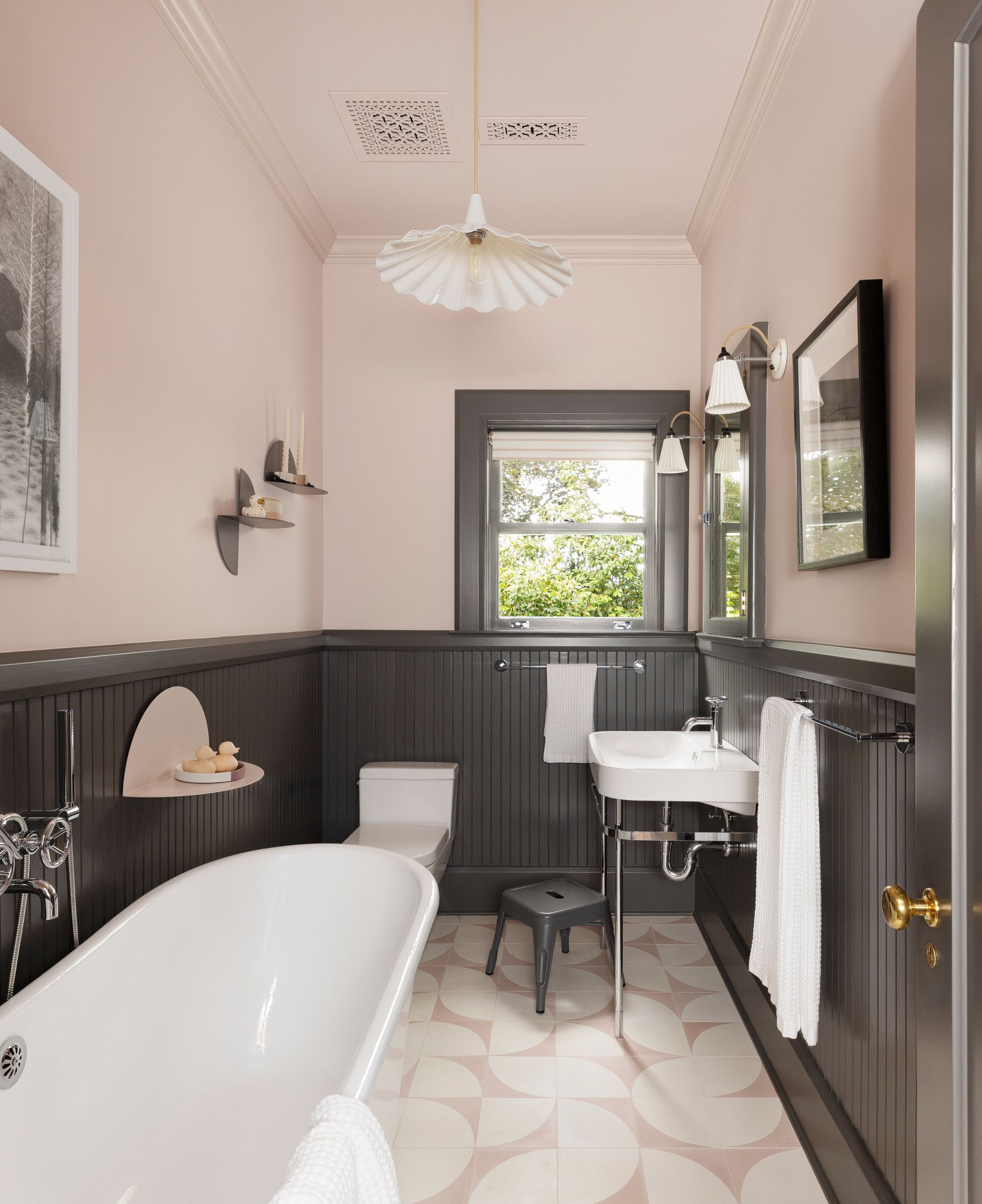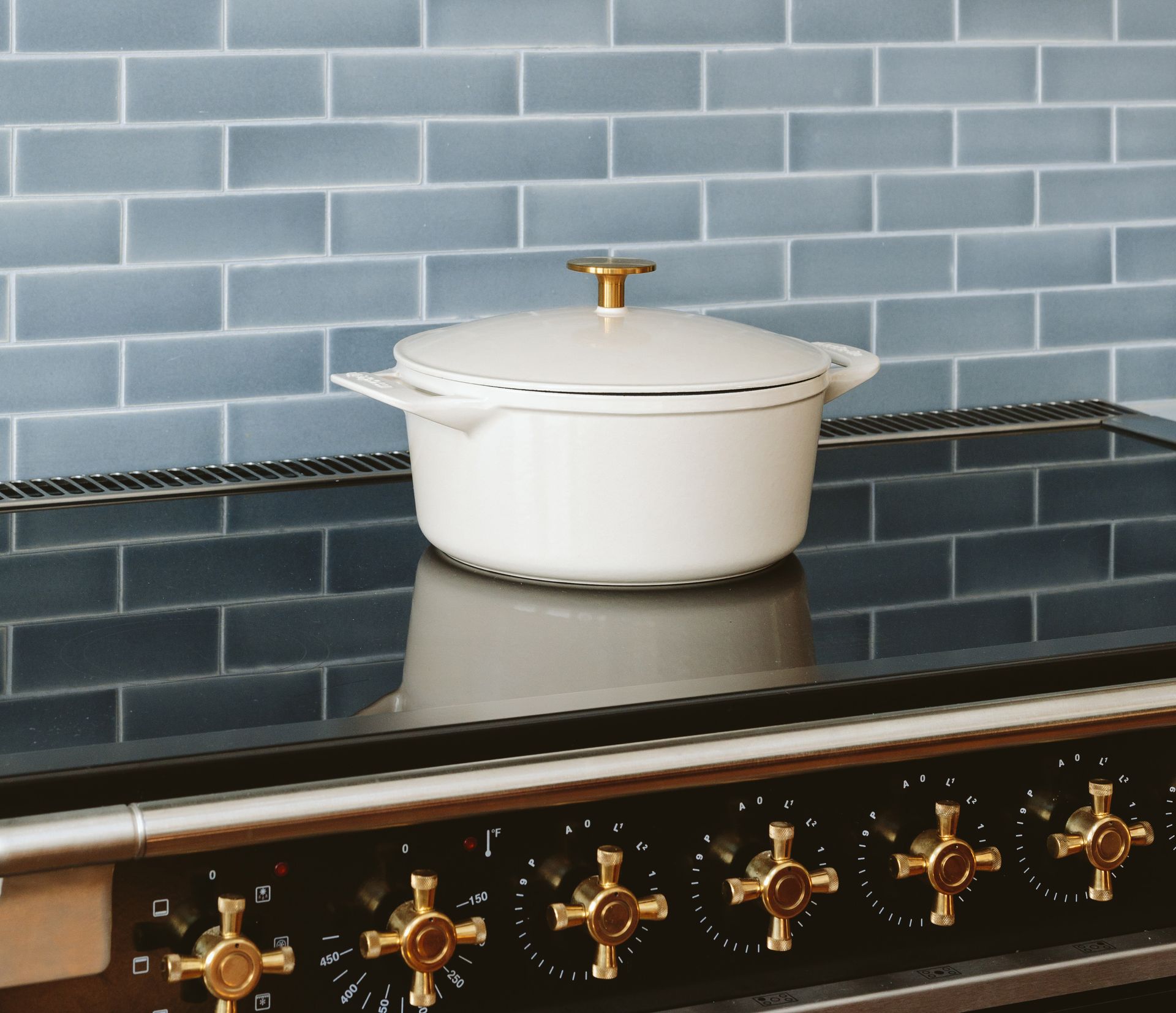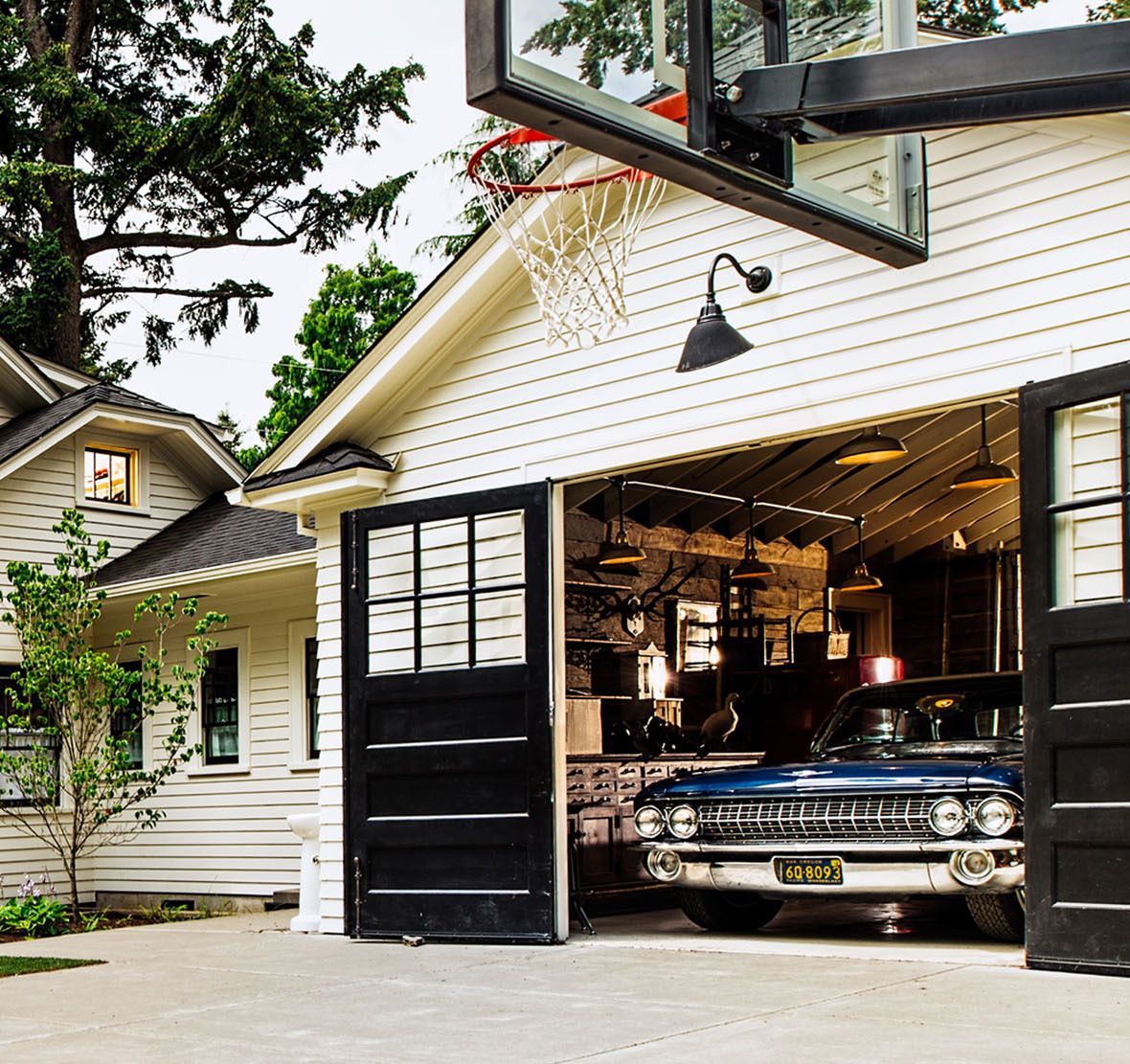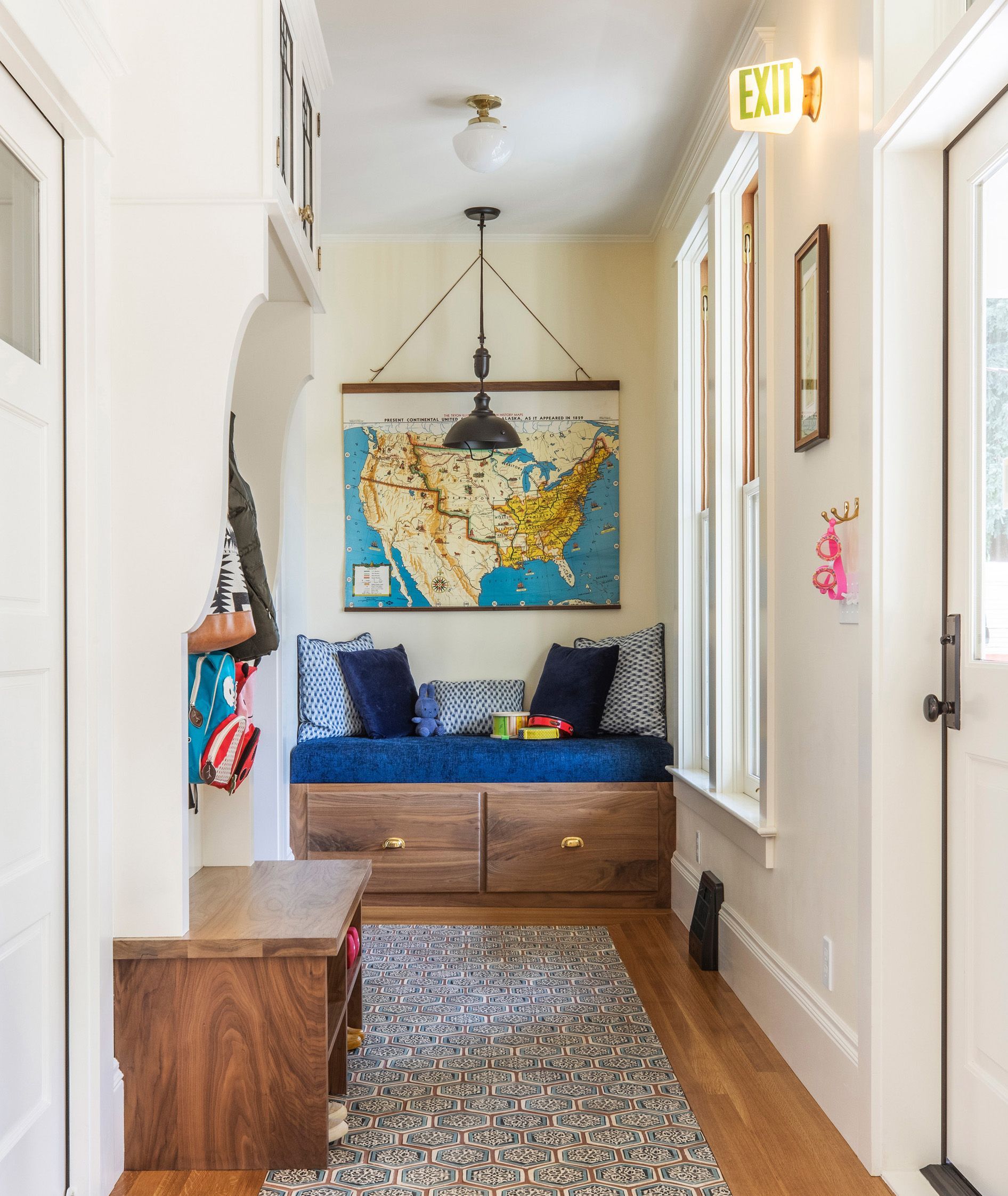Pros and Cons of Pedestal Sinks in Historic Bathrooms
Pros and Cons of Pedestal Sinks in Historic Bathrooms
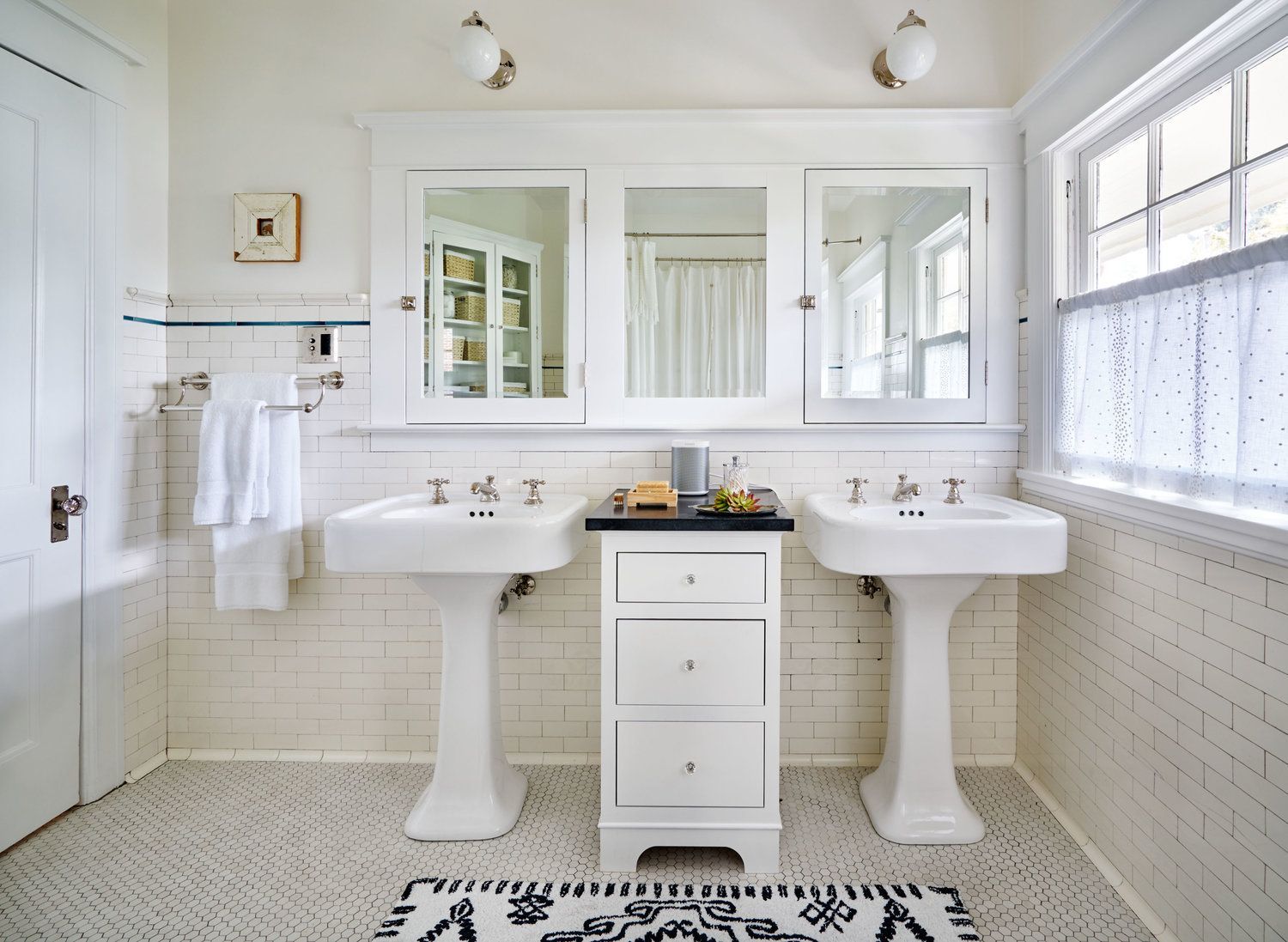
To pedestal sink or not to pedestal sink - that is the question...
Our clients seem to divide into clear camps when it comes to the question of bathroom sinks:
- There are the must-have-two-sinks vs those who like to share one.
- There are those who must-have-vanity-storage vs clients who prefer a pedestal sink for its aesthetic (not concerned over potentially less counter and storage space)
These preferences translate into a few other related choices. This is a purely philosophical consideration and has not been backed up with data, but I feel that Team Pedestal also leans towards freestanding or clawfoot tubs where the Vanity Sinkers would compromise a tub for a shower.
But enough of these ponderings, let’s get down to the nitty-gritty: why we have a whole article dedicated to this question!
In Portland homes prior to the mid 1920’s, plumbing fixtures were situated away from porous surfaces like wood and lath and plaster due to their tendency to leak. Indoor plumbing was a relatively new luxury, so homeowners were worried about damage to their houses. Not only were the toilets, sinks and tubs freestanding, the supply lines and valves were also mounted to the surface of the walls for easy access when repairs became necessary.
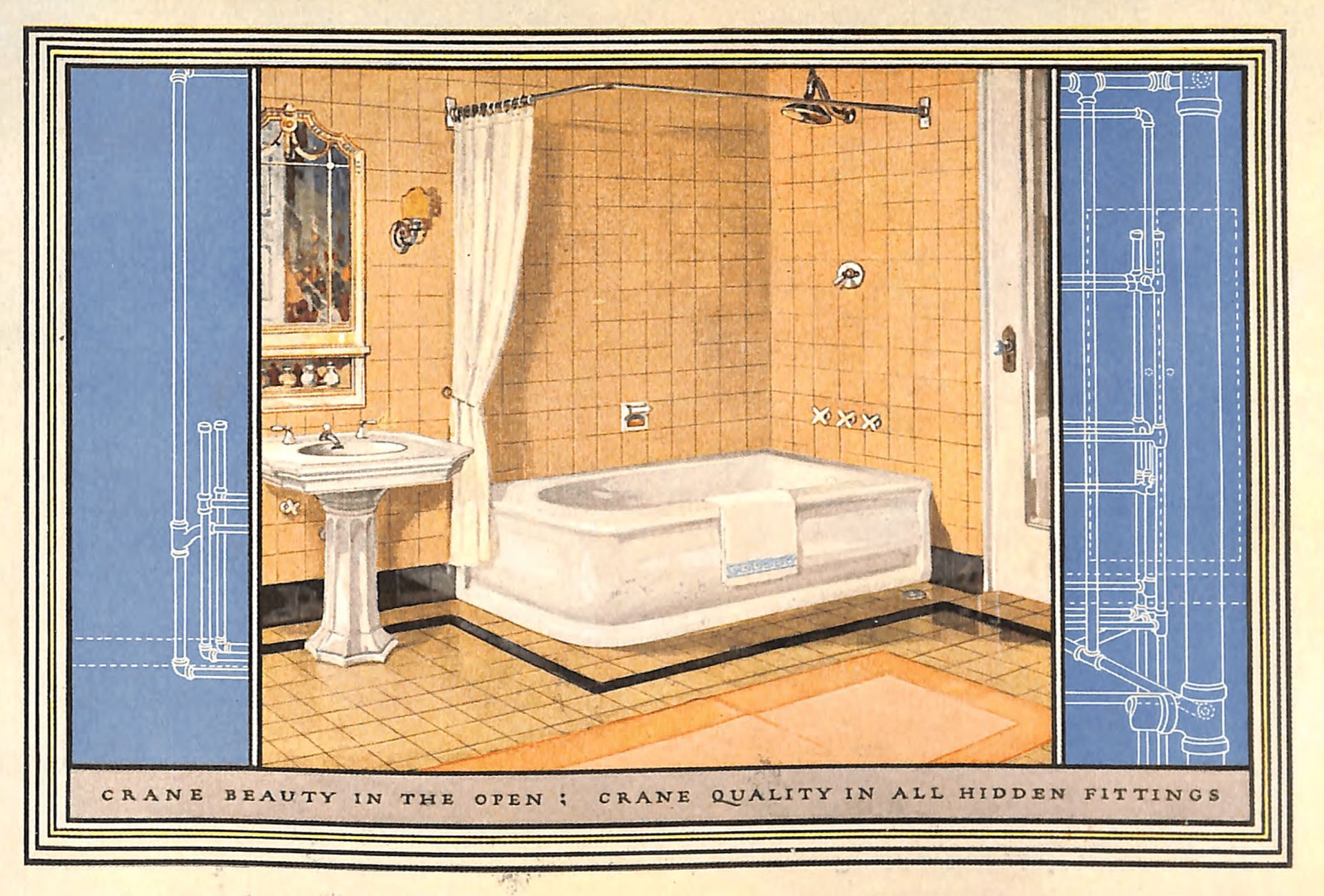
Most plumbing fixtures were made of enameled cast iron. In Portland – considered distant shores at that time – style options were limited. Trains arrived with a few standard tubs, matching sinks and basic toilets, and that was what was installed in Bungalow bathrooms, in retrofitted back porches of Queen Anne Victorians and in Colonial Revival cottages in the early 1900s. Luckily for the homeowners, the designers of plumbing fixture casts were inspired by furniture styles and are still as popular today as ever. For example, clawfoot design of tub supports stem from the poplar furniture foot called the “claw and ball” from European designs of the 18th century.
Storage for linens was often moved into the adjacent hallway to keep fabrics from collecting moisture, as vintage bathrooms were not vented except by windows, which would be left closed during the winter months for obvious reasons, and moisture could become trapped.
Another concern the owners of a bathroom in the first quarter of the 20th century carried with them was worry over germs. With the discovery of the health risks germs pose, bathroom designs leaned towards the institutional – white tile on floors and walls, easy access to all nooks and crannies - so that the space could be kept very clean.
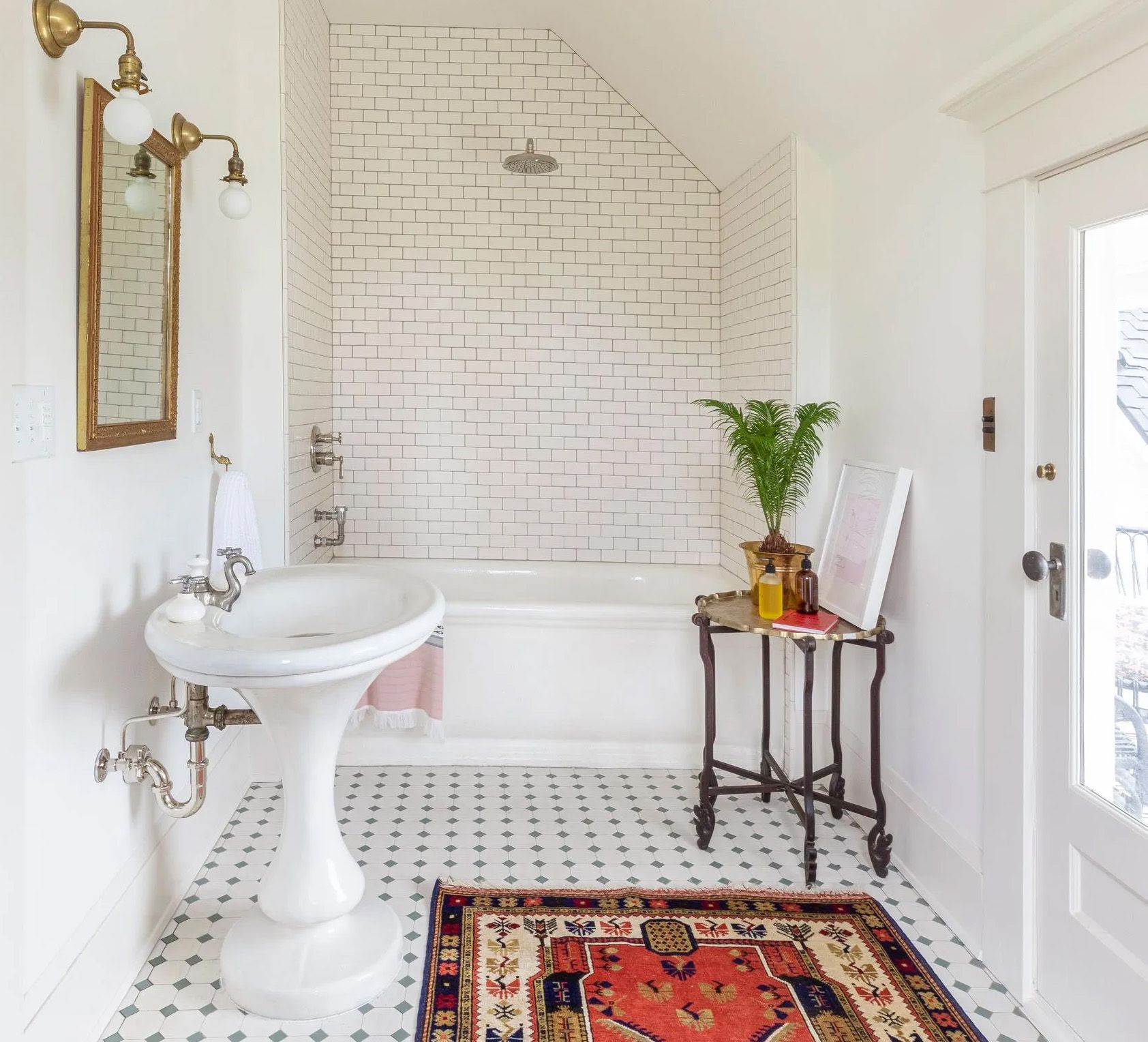
What Makes Pedestal Sinks Ideal for Small Historic Spaces?
In addition to the beauty and period-appropriateness of pedestal sinks, they make for a great space saver in your vintage bathroom. Bathrooms in many older homes are relatively small, and clearances between adjacent plumbing fixtures can be hard to achieve. Pedestal sinks take up little floor and visual space, so are a great option for small historic bathrooms.
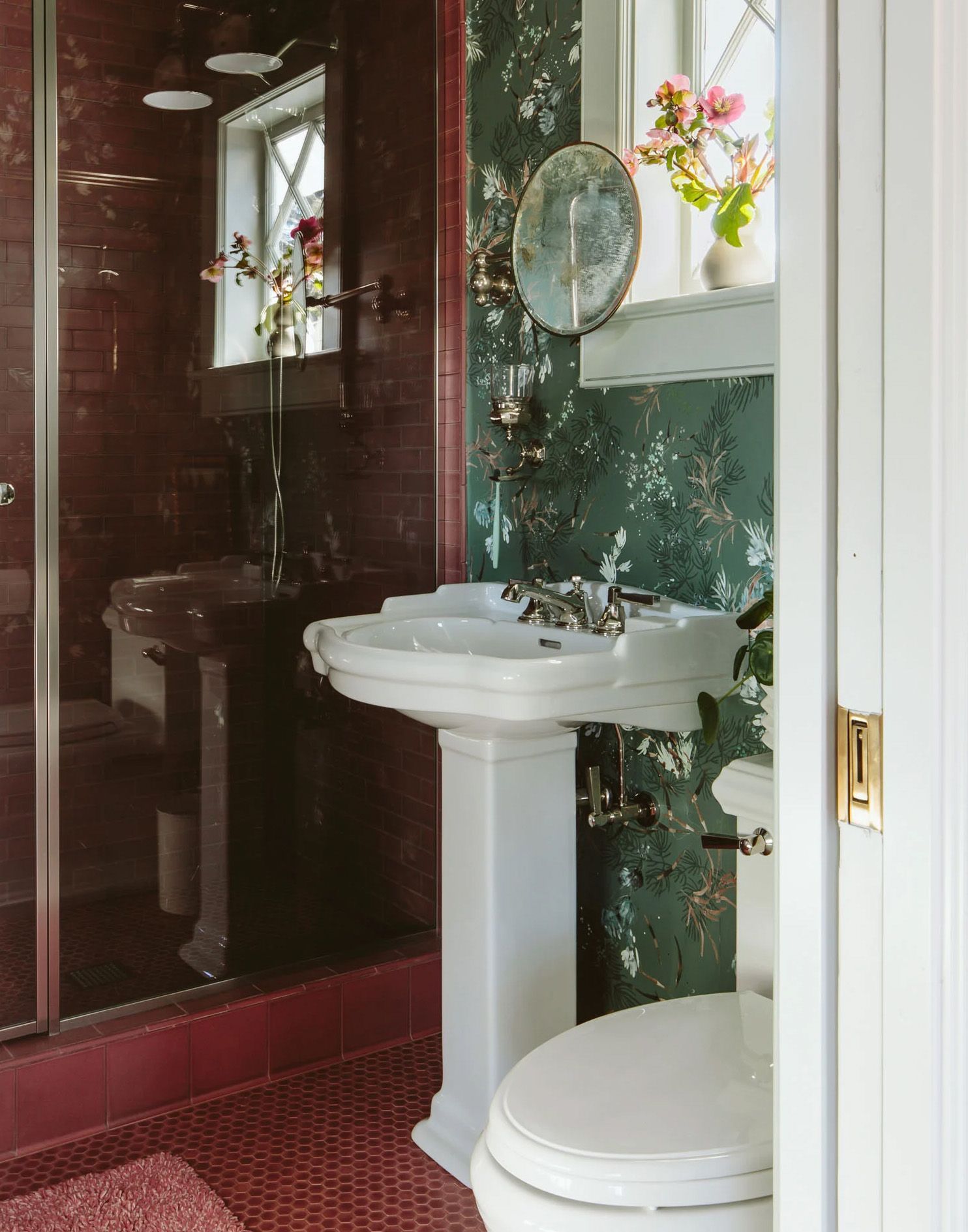
Why do Pedestal Sinks Save Space and Enhance Vintage Charm?
In short, here are the pros of why pedestal sinks are a great choice for your vintage bathroom remodel:
- Pedestal sinks are timeless – their designs have stood the test of time and continue to charm the next generation.
- Pedestal sinks come in many sizes – they can be minute. If space in your vintage bathroom comes at a premium, these small fixtures can help make room for circulation.
- The plumbing lines running to and from a pedestal sink are easily accessible for repair and the fixture is not damaged by potential water issues.
- Most people purchase their vintage homes for love of their aesthetic, so continuing in the spirit in which the period the home was built makes the transition from the adjacent original space into a remodeled vintage bathroom more seamless.
- Cast iron is very durable, so a pedestal sink withstands a lot of wear and tear. We often find a 100-year-old bathroom in pretty bad shape, but the sink just needs a bit of TLC to look almost new again.
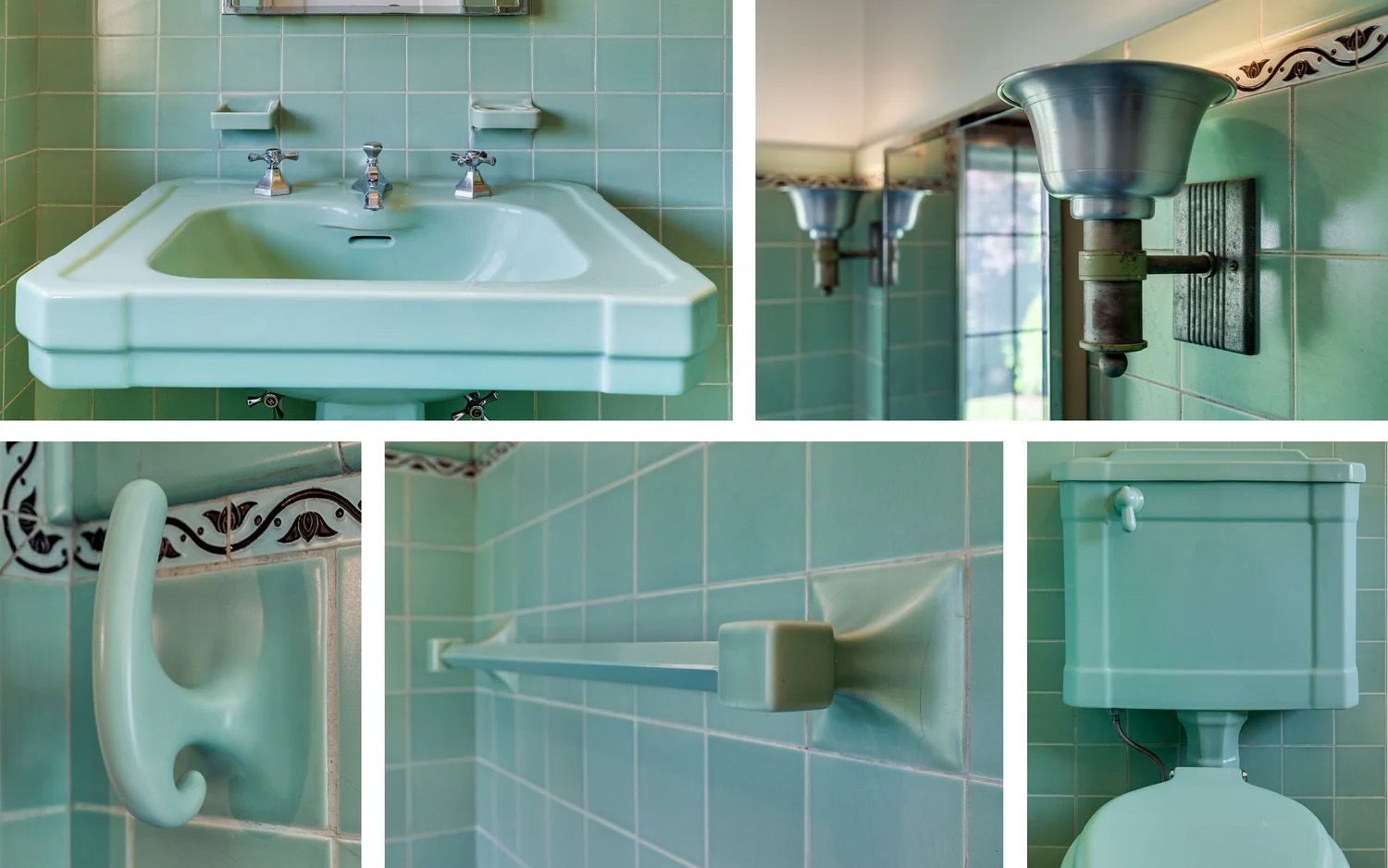
What are the Drawbacks of Limited Storage with Pedestal Sinks?
Of course, there are some compromises to be made when choosing a pedestal sink for your vintage bathroom. Nowadays we don’t need to worry about trapped moisture damaging a wooden vanity. We want counter space near the sink for our many accoutrements: drawers for makeup, brushes and cotton balls. While these can pile up precariously on the edge of your pedestal sink, there are solutions that maintain the vintage bathroom aesthetic and provide storage.
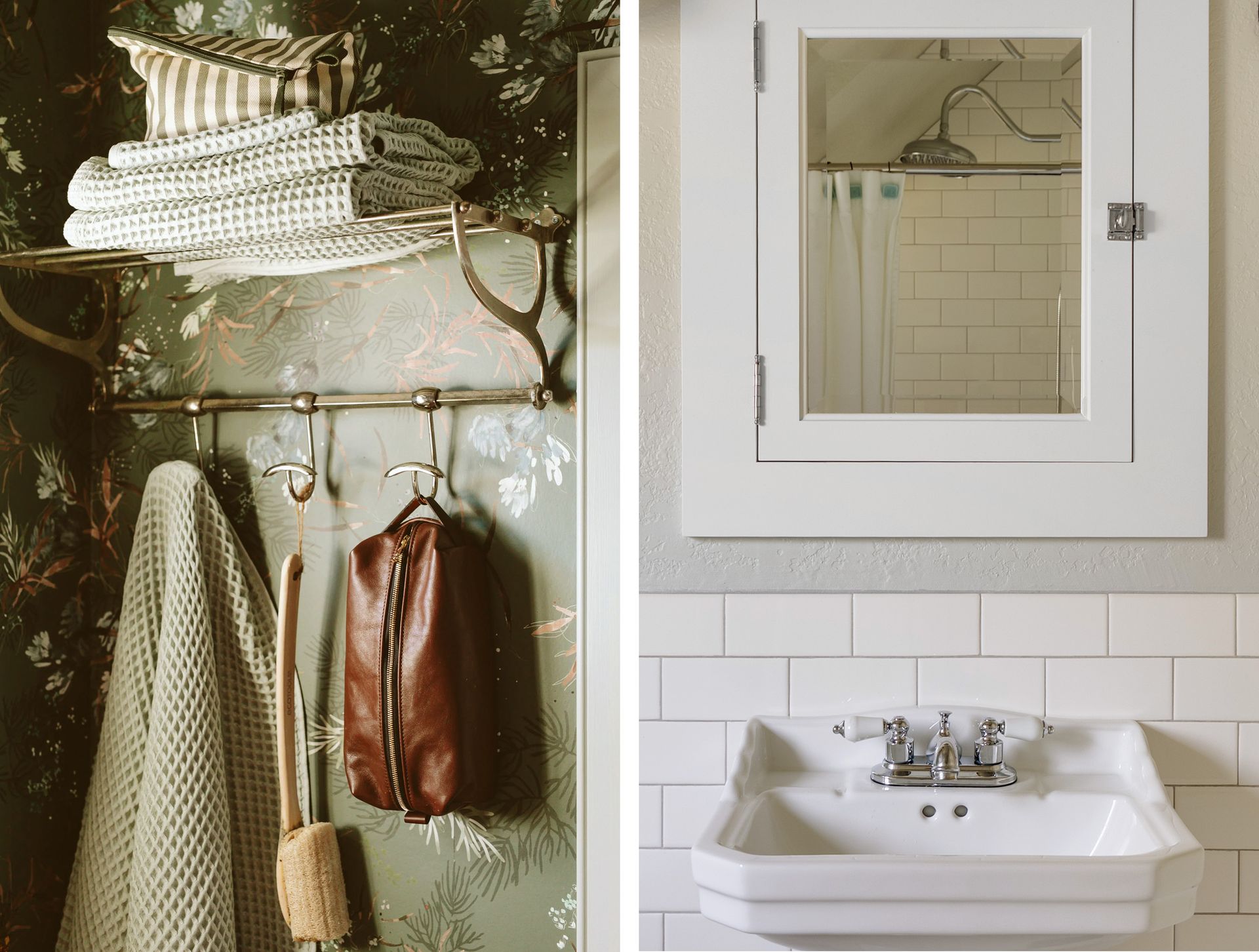
What are Some Solutions to the Pedestal Sink Storage Issue?
- We can install a medicine cabinet with an outlet that houses your electric toothbrush and face creams as well as your pill boxes.
- We can add a shelf above the toilet for counter space (while maintaining access to the toilet tank).
- If space allows, we can create a built-in linen cabinet or incorporate a vintage washstand for storage and counter space mindfully incorporating outlets for blow dryers and razors. In many 1920’s vintage bathrooms, a shallow bank of cabinets was built next to the pedestal sink along the window wall for counter space and hidden storage.
- There are cool train racks that provide wall storage for linens and hanging space for towels.
- Cute waste bins with lids can be tucked below the pedestal sink.
- Glass shelves and wall mounted cup holders also provide storage options and charm.
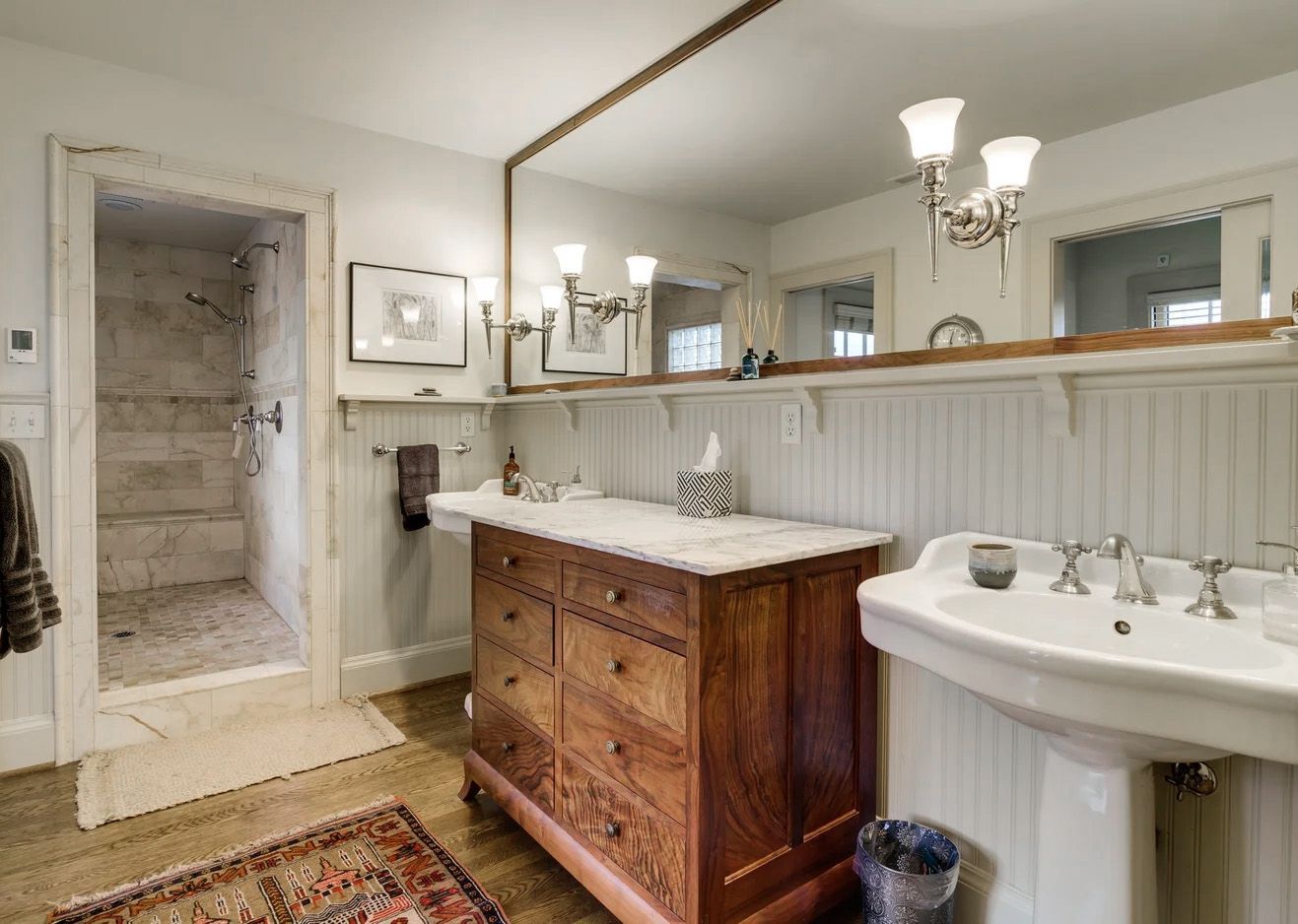
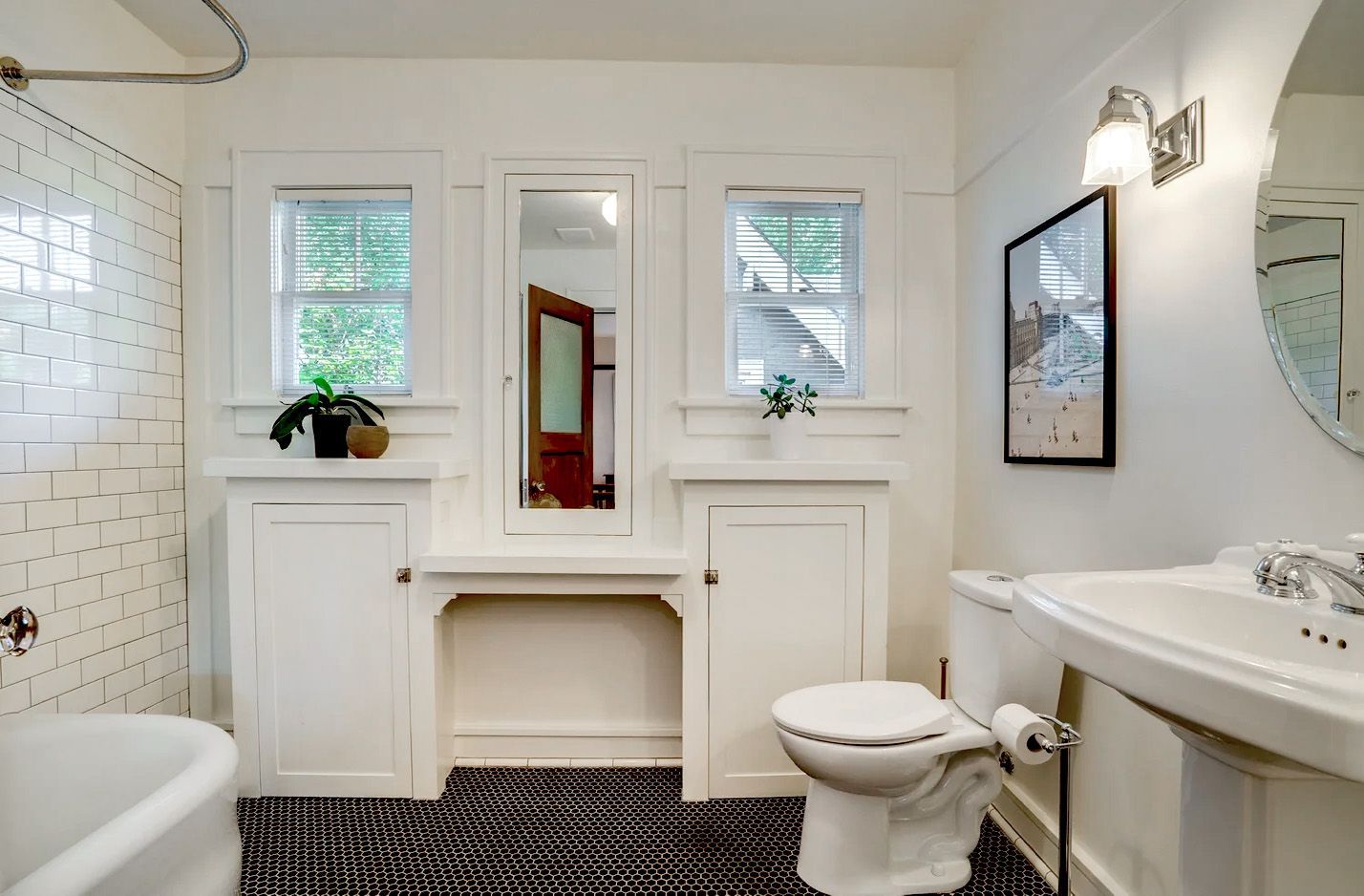
How do Pedestal Sinks Compare to Vanities in Older Homes?
Is a Pedestal Sink Right for Your Historic Portland Bathroom?
While the pedestal sink was the way to go during the first few decades of indoor plumbing, vanities are more commonly used today. The beauty of vanities is that they are highly customizable.
In Arciform’s custom woodshop we can create beautiful, period-appropriate vanities that incorporate a full-inset or half-overlay door and drawer design of the period and make the vanity feel original to the home.
The vanity can house one or two sinks, can be configured for individual storage needs and can incorporate a makeup counter, if space allows.
When mobility is an issue, we can create space for a wheelchair and mount grab bars.
We can choose the counter materials that were popular for kitchens during that era or get inspired by the many stone counters that were used on Victorian washstands. We can install an undermounted sink for ease of cleaning or a vessel sink to mimic the bowl and pitcher of olden days.
We can install wall mounted faucets, and hide all the supply lines and valves as well as the drainpipes.
In short, we can be very creative with vanities.
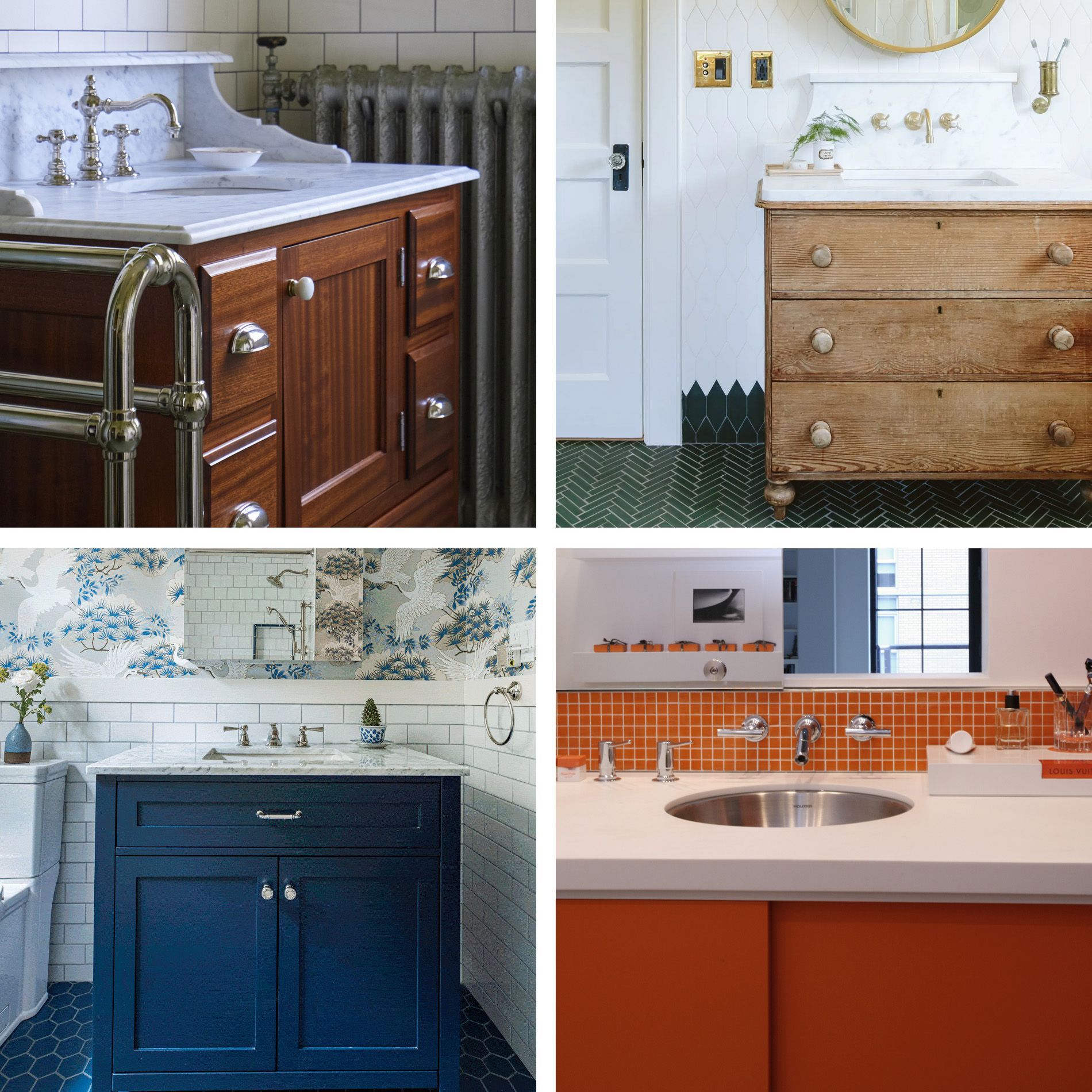
In Conclusion
The battle between the sinks is, most of the time, a personal matter. When it comes to tiny spaces, the pedestal sink wins. But when you have space and can choose, we help you make the best decision for you and your home. For a more in depth look at what it takes to remodel your vintage bathroom, see our comprehensive guide Everything You Need to Know When Remodeling an Existing Bathroom.
Still weighing your options? Let's discuss what works best for your historic bathroom.
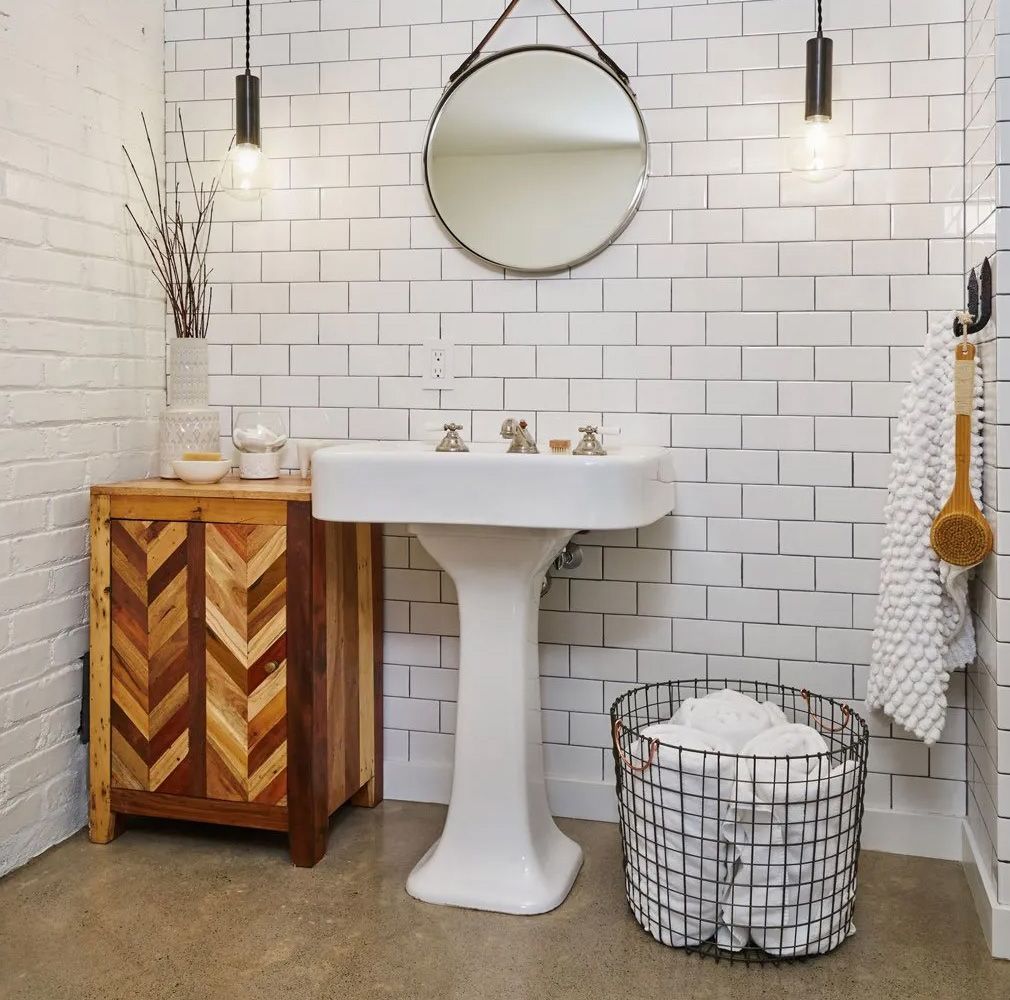
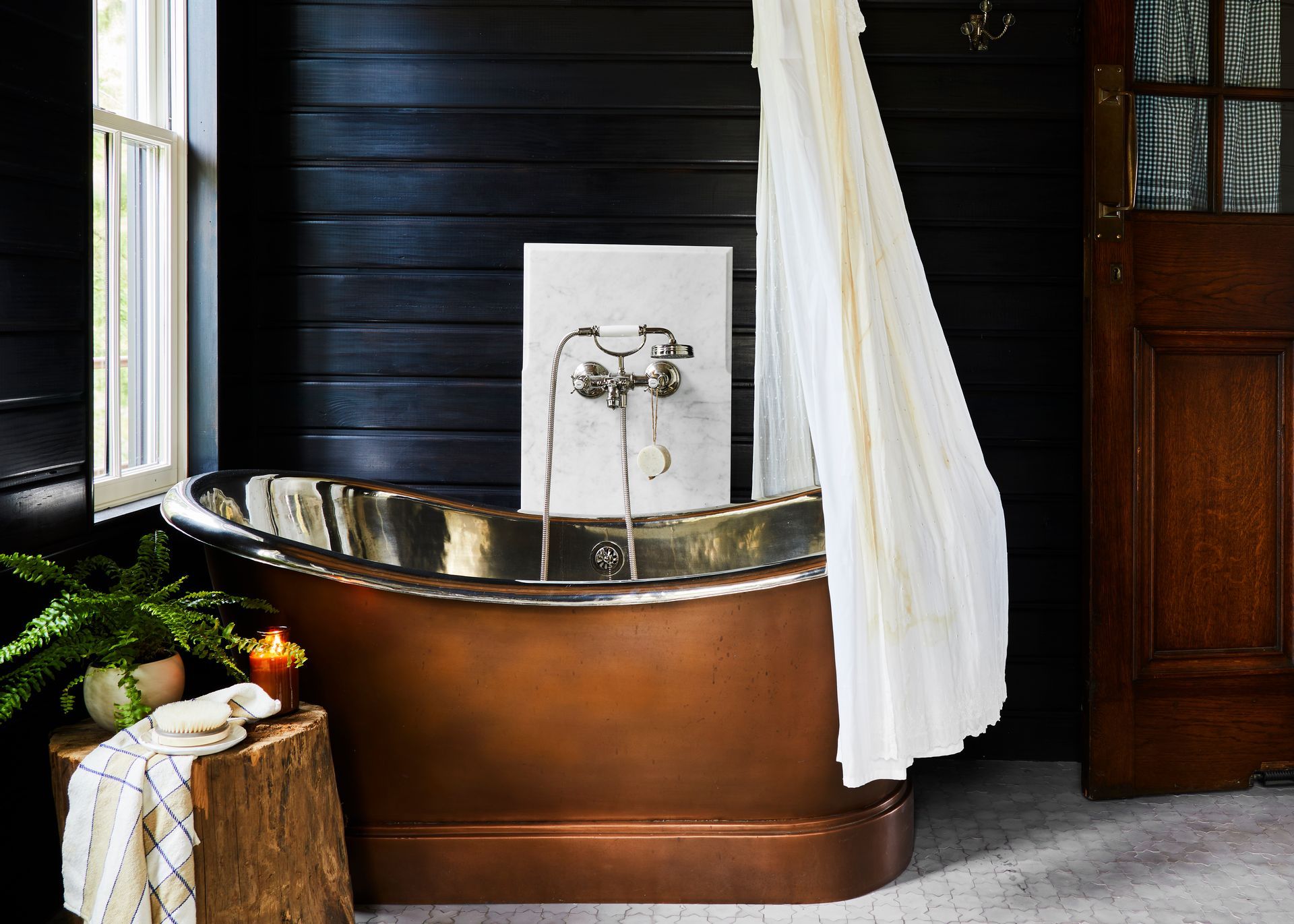
bath portfolio
FIND MORE INSPIRING IDEAS HERE
To pedestal sink or not to pedestal sink - that is the question...
Our clients seem to divide into clear camps when it comes to the question of bathroom sinks:
- There are the must-have-two-sinks vs those who like to share one.
- There are those who must-have-vanity-storage vs clients who prefer a pedestal sink for its aesthetic (not concerned over potentially less counter and storage space)
These preferences translate into a few other related choices. This is a purely philosophical consideration and has not been backed up with data, but I feel that Team Pedestal also leans towards freestanding or clawfoot tubs where the Vanity Sinkers would compromise a tub for a shower.
But enough of these ponderings, let’s get down to the nitty-gritty: why we have a whole article dedicated to this question!
In Portland homes prior to the mid 1920’s, plumbing fixtures were situated away from porous surfaces like wood and lath and plaster due to their tendency to leak. Indoor plumbing was a relatively new luxury, so homeowners were worried about damage to their houses. Not only were the toilets, sinks and tubs freestanding, the supply lines and valves were also mounted to the surface of the walls for easy access when repairs became necessary.

Most plumbing fixtures were made of enameled cast iron. In Portland – considered distant shores at that time – style options were limited. Trains arrived with a few standard tubs, matching sinks and basic toilets, and that was what was installed in Bungalow bathrooms, in retrofitted back porches of Queen Anne Victorians and in Colonial Revival cottages in the early 1900s. Luckily for the homeowners, the designers of plumbing fixture casts were inspired by furniture styles and are still as popular today as ever. For example, clawfoot design of tub supports stem from the poplar furniture foot called the “claw and ball” from European designs of the 18th century.
Storage for linens was often moved into the adjacent hallway to keep fabrics from collecting moisture, as vintage bathrooms were not vented except by windows, which would be left closed during the winter months for obvious reasons, and moisture could become trapped.
Another concern the owners of a bathroom in the first quarter of the 20th century carried with them was worry over germs. With the discovery of the health risks germs pose, bathroom designs leaned towards the institutional – white tile on floors and walls, easy access to all nooks and crannies - so that the space could be kept very clean.

What Makes Pedestal Sinks Ideal for Small Historic Spaces?
In addition to the beauty and period-appropriateness of pedestal sinks, they make for a great space saver in your vintage bathroom. Bathrooms in many older homes are relatively small, and clearances between adjacent plumbing fixtures can be hard to achieve. Pedestal sinks take up little floor and visual space, so are a great option for small historic bathrooms.

Why do Pedestal Sinks Save Space and Enhance Vintage Charm?
In short, here are the pros of why pedestal sinks are a great choice for your vintage bathroom remodel:
- Pedestal sinks are timeless – their designs have stood the test of time and continue to charm the next generation.
- Pedestal sinks come in many sizes – they can be minute. If space in your vintage bathroom comes at a premium, these small fixtures can help make room for circulation.
- The plumbing lines running to and from a pedestal sink are easily accessible for repair and the fixture is not damaged by potential water issues.
- Most people purchase their vintage homes for love of their aesthetic, so continuing in the spirit in which the period the home was built makes the transition from the adjacent original space into a remodeled vintage bathroom more seamless.
- Cast iron is very durable, so a pedestal sink withstands a lot of wear and tear. We often find a 100-year-old bathroom in pretty bad shape, but the sink just needs a bit of TLC to look almost new again.

What are the Drawbacks of Limited Storage with Pedestal Sinks?
Of course, there are some compromises to be made when choosing a pedestal sink for your vintage bathroom. Nowadays we don’t need to worry about trapped moisture damaging a wooden vanity. We want counter space near the sink for our many accoutrements: drawers for makeup, brushes and cotton balls. While these can pile up precariously on the edge of your pedestal sink, there are solutions that maintain the vintage bathroom aesthetic and provide storage.

What are Some Solutions to the Pedestal Sink Storage Issue?
- We can install a medicine cabinet with an outlet that houses your electric toothbrush and face creams as well as your pill boxes.
- We can add a shelf above the toilet for counter space (while maintaining access to the toilet tank).
- If space allows, we can create a built-in linen cabinet or incorporate a vintage washstand for storage and counter space mindfully incorporating outlets for blow dryers and razors. In many 1920’s vintage bathrooms, a shallow bank of cabinets was built next to the pedestal sink along the window wall for counter space and hidden storage.
- There are cool train racks that provide wall storage for linens and hanging space for towels.
- Cute waste bins with lids can be tucked below the pedestal sink.
- Glass shelves and wall mounted cup holders also provide storage options and charm.


How do Pedestal Sinks Compare to Vanities in Older Homes?
Is a Pedestal Sink Right for Your Historic Portland Bathroom?
While the pedestal sink was the way to go during the first few decades of indoor plumbing, vanities are more commonly used today. The beauty of vanities is that they are highly customizable.
In Arciform’s custom woodshop we can create beautiful, period-appropriate vanities that incorporate a full-inset or half-overlay door and drawer design of the period and make the vanity feel original to the home.
The vanity can house one or two sinks, can be configured for individual storage needs and can incorporate a makeup counter, if space allows.
When mobility is an issue, we can create space for a wheelchair and mount grab bars.
We can choose the counter materials that were popular for kitchens during that era or get inspired by the many stone counters that were used on Victorian washstands. We can install an undermounted sink for ease of cleaning or a vessel sink to mimic the bowl and pitcher of olden days.
We can install wall mounted faucets, and hide all the supply lines and valves as well as the drainpipes.
In short, we can be very creative with vanities.

In Conclusion
The battle between the sinks is, most of the time, a personal matter. When it comes to tiny spaces, the pedestal sink wins. But when you have space and can choose, we help you make the best decision for you and your home. For a more in depth look at what it takes to remodel your vintage bathroom, see our comprehensive guide Everything You Need to Know When Remodeling an Existing Bathroom.
Still weighing your options? Let's discuss what works best for your historic bathroom.


bath portfolio
FIND MORE INSPIRING IDEAS HERESee More Stories



